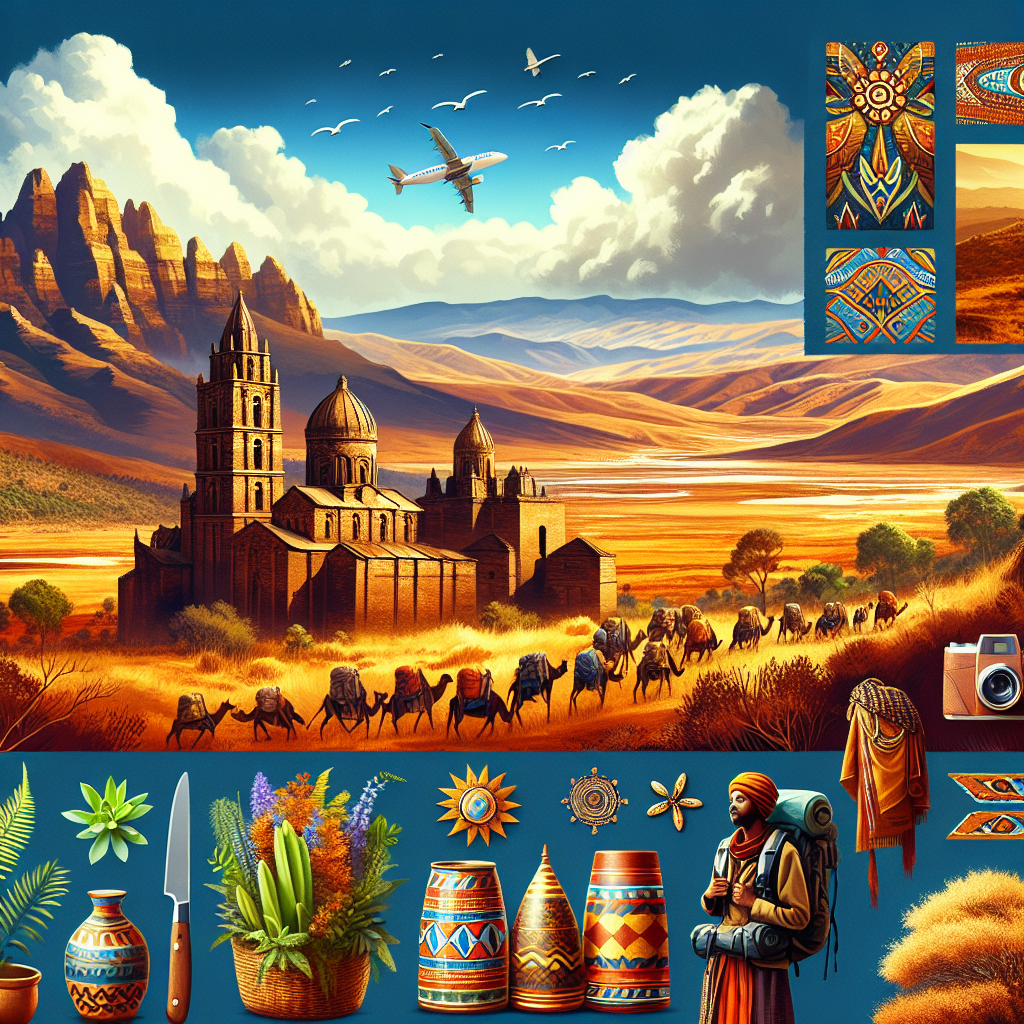Backpacking Ethiopia: A Beginner’s Guide to an Unforgettable Adventure
Ethiopia, a country brimming with ancient history, breathtaking landscapes, and a rich tapestry of cultures, offers a unique adventure for the intrepid backpacker. Known as the cradle of humanity, it’s a destination that promises an unforgettable journey. Whether you’re fascinated by history, culture, or natural beauty, Ethiopia has something to offer. This beginner’s guide will navigate you through planning your trip, what to expect, and how to make the most out of your Ethiopian adventure.
Preparing for Your Trip
Visas and Documentation
Most travelers will need a visa to enter Ethiopia. Fortunately, Ethiopia offers e-Visas for tourists, which can be applied for online, streamlining the process. Ensure your passport has at least six months of validity from your planned date of entry.
Health Precautions
Visit a travel clinic for vaccinations and health advice at least a month before departure. Recommended vaccinations include Hepatitis A, Typhoid, and Yellow Fever, along with routine vaccinations. Malaria prophylaxis might also be advised based on your itinerary.
What to Pack
Packing for Ethiopia requires preparation for varied terrains and climates. Lightweight, breathable clothing for the hot days, and layers for cooler evenings, especially in the highlands, are essential. Don’t forget a sturdy pair of walking shoes, a hat, sunglasses, and sunscreen. A basic first-aid kit, insect repellent, and water purification tablets or a water filter should also be in your backpack.
The Best Time to Visit
Ethiopia’s diverse geography means weather can vary greatly, but generally, the best time to visit is during the dry season from October to June. The highlands, home to many of Ethiopia’s highlights, are temperate and enjoyable during these months. The rainy season from July to September can make travel challenging due to muddy roads and hiking trails.
Must-Visit Places
Addis Ababa
Start your journey in Ethiopia’s bustling capital, Addis Ababa. Visit the National Museum of Ethiopia to see Lucy, our ancient hominid ancestor, and delve into the country’s rich history. The Merkato, one of Africa’s largest outdoor markets, offers an authentic glimpse into Ethiopian daily life.
Lalibela
No trip to Ethiopia is complete without visiting the rock-hewn churches of Lalibela, a UNESCO World Heritage site. Carved from solid rock in the 12th and 13th centuries, these churches are a testament to Ethiopia’s rich religious history and architectural innovation.
Simien Mountains National Park
For nature lovers, the Simien Mountains offer stunning scenery and the chance to see rare wildlife like the Gelada baboon and the Ethiopian wolf. Trekking in the park can range from a day trip to a multi-day adventure.
Gondar
Known as the “Camelot of Africa,” Gondar is home to castles and palaces dating back to the Ethiopian Empire. Exploring the Royal Enclosure, a UNESCO World Heritage site, gives you a glimpse into Ethiopia’s imperial past.
Omo Valley
For a cultural immersion, visit the Omo Valley. Home to numerous indigenous tribes, the valley offers a chance to learn about traditional lifestyles and customs that have persisted for centuries.
Tips for a Successful Trip
Respect Local Customs
Ethiopia has diverse cultures and religious practices. Dress modestly, especially when visiting religious sites. Learning a few phrases in Amharic, the national language, can go a long way in showing respect and making connections with locals.
Transportation
Domestic flights are the quickest way to cover long distances, with Ethiopian Airlines offering extensive routes. For shorter distances, buses are affordable but can be crowded and slow. Renting a car with a driver is a comfortable but more expensive option.
Stay Safe
Ethiopia is generally safe for travelers, but it’s wise to take standard safety precautions. Keep valuables secure, avoid traveling alone at night, and stay informed about the political situation, especially in areas prone to unrest.
Savor the Cuisine
Ethiopian cuisine is flavorful and unique, with injera, a sourdough flatbread, serving as the staple. Don’t miss out on trying traditional dishes like doro wat (chicken stew) and shiro (chickpea stew). Ethiopian coffee, the best in the world to many, is an experience in itself.
FAQs
Q: Do I need any vaccinations to visit Ethiopia?
A: Yes, it’s recommended to get vaccinations for Hepatitis A, Typhoid, and Yellow Fever, along with your routine vaccinations. Check with a travel clinic for the most current advice.
Q: Is it safe to backpack in Ethiopia?
A: Yes, Ethiopia is generally safe for backpackers, but it’s important to stay updated on current conditions and avoid areas with known unrest.
Q: Can I drink tap water in Ethiopia?
A: It’s not recommended to drink tap water. Bottled water, boiling water, or using a water purifier are safer options.
Q: What should I wear?
A: Lightweight, breathable clothing for hot days, layers for cooler evenings, and modest clothing for religious sites. Sturdy walking shoes are a must for exploring.
Q: How can I respect local customs?
A: Dress modestly, especially at religious sites. Learning some basic Amharic phrases and being aware of local traditions and etiquette will also show respect.
Recreating the Experience
Upon returning home, keep the adventure alive by engaging in Ethiopian culture. Cook traditional dishes, using spices like berbere to capture authentic flavors. Listen to Ethiopian music, and share stories and photos of your journey with friends and family. Consider joining local Ethiopian cultural events or communities to stay connected.
Backpacking through Ethiopia offers an unparalleled adventure, combining ancient history, vibrant cultures, and stunning landscapes. With careful planning and an open heart, your Ethiopian journey will surely be an unforgettable experience.
